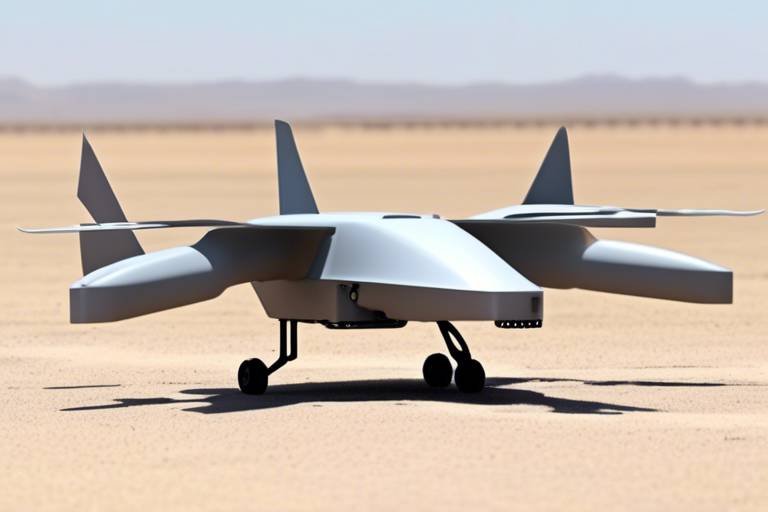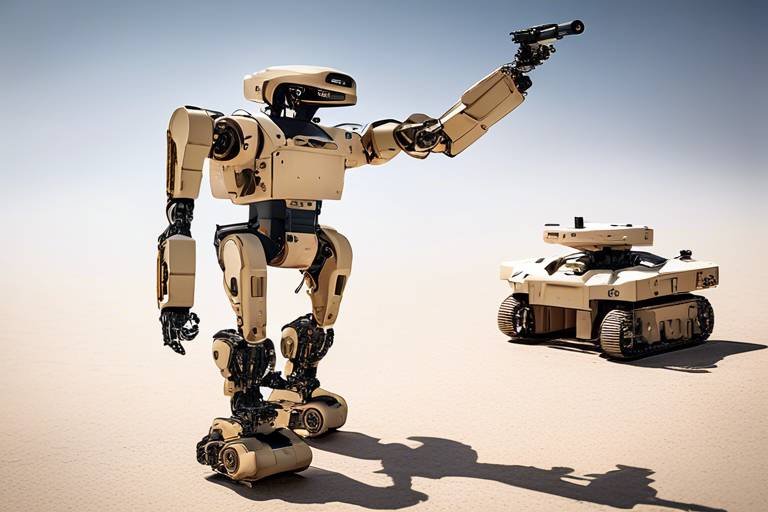How the K-MAX Unmanned Helicopter is Revolutionizing Logistics
The world of logistics is undergoing a seismic shift, and at the forefront of this transformation is the K-MAX unmanned helicopter. Imagine a world where goods can be transported swiftly and efficiently, bypassing the limitations of traditional ground transport. The K-MAX is not just a dream; it’s a reality that is reshaping how we think about delivering supplies, especially in remote and challenging environments. With its unique capabilities, the K-MAX is paving the way for a new era of aerial delivery systems that promise to enhance operational efficiency across various industries.
What sets the K-MAX apart from other unmanned aerial vehicles (UAVs) is its remarkable design and technology. This helicopter is specifically engineered for cargo transport, boasting a dual-rotor system that allows for exceptional stability and lift. The K-MAX can carry payloads of up to 6,000 pounds, making it an invaluable asset for both military and commercial applications. Its ability to operate autonomously means that it can fly predetermined routes, reducing the need for human intervention and minimizing risks associated with manned flights.
As we delve deeper into the applications of the K-MAX, it's essential to recognize its profound impact on military logistics. In combat zones, where time is of the essence, the K-MAX provides rapid resupply capabilities that can mean the difference between mission success and failure. With its ability to deliver supplies directly to troops in hard-to-reach areas, the K-MAX enhances operational efficiency while ensuring the safety of personnel. This not only reduces the risk associated with traditional supply chains but also streamlines the entire logistics process.
However, the K-MAX is not limited to military applications. In the commercial sector, it is making significant strides, particularly in industries such as construction, agriculture, and disaster relief. For instance, in construction, the K-MAX can transport heavy materials to remote job sites, reducing the need for extensive ground transportation and saving valuable time. Similarly, in agriculture, it can deliver seeds, fertilizers, and even equipment to fields that are otherwise inaccessible. During natural disasters, the K-MAX can swiftly deliver essential supplies to affected areas, showcasing its versatility and reliability.
When comparing the K-MAX to traditional logistics methods, the advantages become glaringly evident. Here’s a quick overview of the benefits:
- Reduced Operational Costs: With lower fuel consumption and fewer personnel required for transport, the K-MAX can significantly cut costs.
- Increased Safety: By minimizing human involvement in dangerous environments, the K-MAX enhances the safety of logistics operations.
- Access to Hard-to-Reach Areas: The helicopter can easily navigate terrains that are inaccessible to trucks or other ground vehicles.
Despite its impressive capabilities, the K-MAX faces challenges that could hinder its widespread adoption. Regulatory hurdles, such as airspace restrictions and the need for certification, pose significant obstacles. Moreover, technological limitations, including battery life and payload capacity, need to be addressed to fully realize the potential of the K-MAX. Public perception also plays a critical role; educating the public about the safety and reliability of unmanned systems is essential for acceptance.
Looking ahead, the future of logistics is bright, with the K-MAX leading the charge. As technology continues to advance, we can expect to see improvements in flight range, payload capacity, and autonomy, further enhancing the capabilities of the K-MAX. The integration of artificial intelligence and machine learning could also revolutionize how these helicopters operate, allowing for smarter routing and more efficient delivery systems.
To illustrate the effectiveness of the K-MAX, several case studies highlight successful deployments across various sectors. For example, in military operations, the K-MAX has been used to deliver supplies to troops stationed in remote locations, proving its reliability under pressure. In the commercial sector, companies have reported significant time savings and reduced costs by utilizing the K-MAX for material transport. These real-world applications underscore the helicopter's potential to redefine logistics as we know it.
When comparing the K-MAX to other UAVs in the logistics field, it becomes clear that it possesses unique strengths. Its dual-rotor design provides superior stability and lift compared to many quadcopters, making it better suited for heavy payloads. Additionally, its proven track record in military operations gives it an edge in reliability and performance.
In conclusion, the K-MAX unmanned helicopter is not just a technological marvel; it is a game-changer in the logistics industry. As we embrace this innovative tool, we can expect to see enhanced efficiency, reduced costs, and improved safety in logistics operations. The future of K-MAX in logistics looks promising, and we are just beginning to scratch the surface of what this incredible technology can achieve.
- What is the maximum payload capacity of the K-MAX? The K-MAX can carry payloads of up to 6,000 pounds.
- How does the K-MAX operate autonomously? The K-MAX is programmed to follow predetermined routes, reducing the need for human intervention.
- What industries benefit from the K-MAX? The K-MAX is used in military logistics, construction, agriculture, and disaster relief.
- What challenges does the K-MAX face? Regulatory hurdles, technological limitations, and public perception issues are significant challenges.
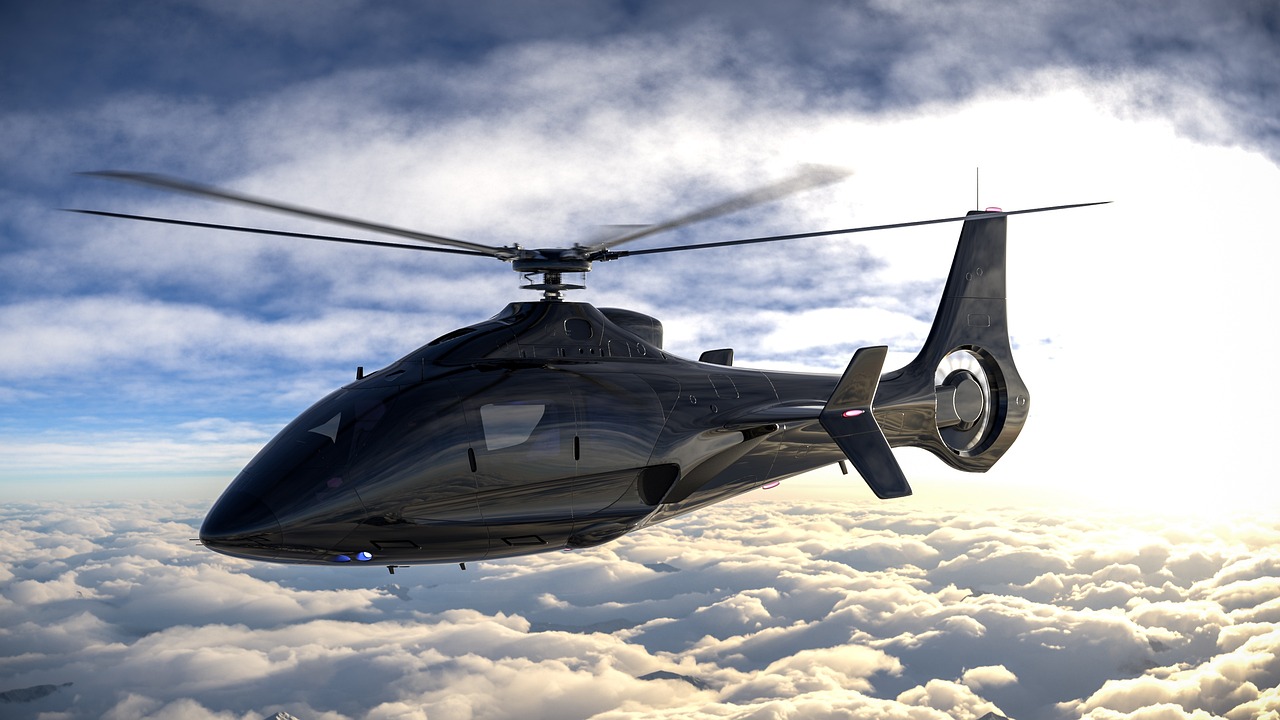
Introduction to K-MAX Technology
The K-MAX unmanned helicopter stands at the forefront of logistics innovation, redefining how we perceive aerial transport. Designed with cutting-edge technology, the K-MAX is not just another drone; it’s a powerhouse capable of lifting and transporting heavy cargo with remarkable efficiency. Imagine a flying workhorse that can deliver supplies to the most inaccessible locations—this is the essence of K-MAX.
One of the most striking features of the K-MAX is its dual-rotor design, which provides enhanced stability and lifting capability. This design allows it to carry payloads of up to 6,000 pounds, making it an ideal solution for various logistical challenges. The helicopter operates autonomously, which means it can fly predetermined routes without direct human control. This level of automation significantly reduces the risk of human error and enhances operational safety.
Moreover, the K-MAX is equipped with advanced avionics and GPS technology, allowing for pinpoint accuracy in delivery. Whether it’s dropping off essential supplies in a disaster-stricken area or transporting materials to a remote construction site, the K-MAX ensures that cargo reaches its destination swiftly and securely. The helicopter is also capable of real-time monitoring, providing operators with critical data about its flight path and cargo status.
What truly sets the K-MAX apart from traditional logistics methods is its versatility. It can operate in various environments, from urban landscapes to rugged terrains, making it a game-changer for industries that require reliable and efficient transport solutions. In addition, the K-MAX can be deployed in a range of applications, from military operations to commercial ventures, showcasing its adaptability.
As we delve deeper into the capabilities and applications of the K-MAX unmanned helicopter, it becomes clear that this technology is not just about flying cargo; it’s about transforming logistics as we know it. The future of aerial delivery systems is bright, and the K-MAX is leading the charge into this new era.
- What is the maximum payload capacity of the K-MAX?
The K-MAX can carry payloads of up to 6,000 pounds. - Is the K-MAX suitable for military operations?
Yes, the K-MAX has been extensively used in military logistics for rapid resupply missions. - Can the K-MAX operate in adverse weather conditions?
While it is designed for various environments, operational limits may vary based on specific weather conditions. - How does the K-MAX ensure safety during operations?
The K-MAX employs advanced avionics and real-time monitoring to enhance flight safety and operational efficiency.
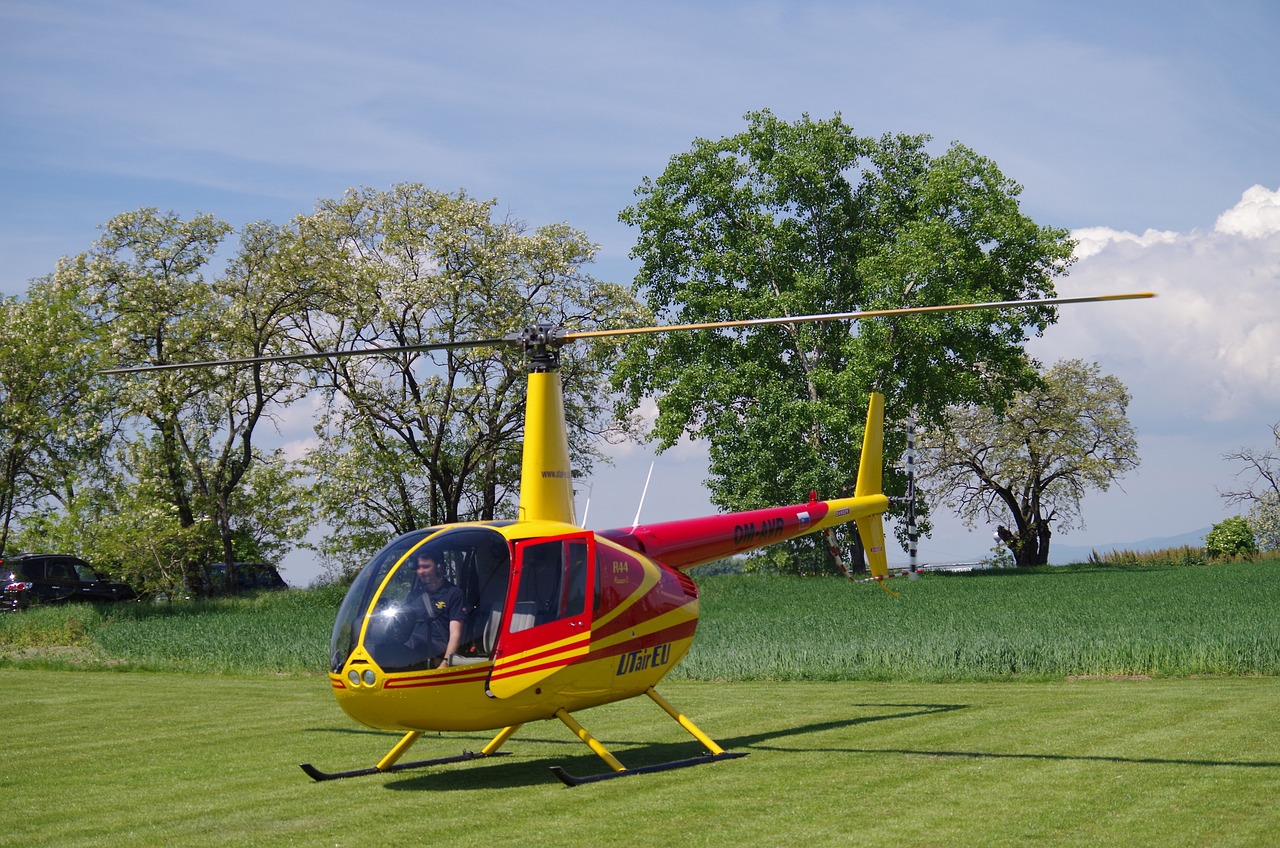
Applications in Military Logistics
The K-MAX unmanned helicopter is not just another flying gadget; it's a game-changer in military logistics. Imagine a battlefield where supplies are delivered swiftly and safely without putting pilots at risk. The K-MAX makes this vision a reality. Its ability to perform unmanned cargo transport has proven invaluable in enhancing operational efficiency in military operations. With its unique design and capabilities, K-MAX can carry heavy payloads, making it a reliable choice for transporting essential supplies like ammunition, food, and medical equipment to troops stationed in remote or hostile environments.
One of the standout features of the K-MAX is its dual-rotor design, which allows for exceptional stability and lifting capability. This is particularly important in military applications, where the need for precision and reliability is paramount. The helicopter can carry loads of up to 6,000 pounds, which is no small feat! This capability allows for rapid resupply missions, ensuring that soldiers have what they need when they need it most. Additionally, the K-MAX can operate in challenging weather conditions, making it a versatile asset in military logistics.
Moreover, the K-MAX enhances safety by reducing the need for manned aircraft in dangerous zones. This unmanned system can fly into areas where traditional aircraft would be at risk, thus minimizing the exposure of personnel to potential threats. In fact, during various military operations, K-MAX has successfully delivered supplies without any loss of life, showcasing its effectiveness in high-stakes environments. The integration of advanced navigation systems and automated flight capabilities further boosts its operational efficiency, allowing for autonomous missions that can adapt to changing circumstances on the battlefield.
To better illustrate the K-MAX's role in military logistics, let's consider a few key applications:
- Rapid Resupply Missions: K-MAX can quickly transport critical supplies to frontline troops, ensuring they remain well-equipped.
- Medical Evacuations: In emergencies, K-MAX can deliver medical supplies or even evacuate injured personnel from dangerous locations.
- Transporting Heavy Equipment: The helicopter can carry heavy machinery and equipment necessary for setting up operations in remote areas.
The impact of K-MAX on military logistics extends beyond mere supply transport. It allows for better strategic planning and resource allocation, as commanders can rely on timely deliveries without the concern of risking lives. As military operations continue to evolve, the role of unmanned systems like K-MAX will only become more prominent, paving the way for a new era in logistics.
- How does the K-MAX operate autonomously?
The K-MAX uses advanced navigation and control systems that allow it to fly predefined routes and make real-time adjustments based on environmental conditions. - What types of payloads can the K-MAX carry?
The K-MAX can transport a variety of payloads, including ammunition, food, medical supplies, and heavy equipment, with a maximum capacity of 6,000 pounds. - Is the K-MAX used in non-military applications?
Yes, while primarily designed for military use, the K-MAX is also being adapted for commercial applications such as construction, agriculture, and disaster relief.

Commercial Uses of K-MAX
The K-MAX unmanned helicopter is not just a marvel of military engineering; it's also making significant waves in the commercial sector. Imagine being able to deliver essential supplies to remote locations without the need for extensive road networks or risking human lives in hazardous conditions. The K-MAX does just that, offering a versatile solution for various industries. Its ability to transport heavy loads over challenging terrains opens up a world of possibilities for businesses looking to enhance their logistics capabilities.
One of the most exciting applications of K-MAX is in the construction industry. Construction sites often require materials to be delivered to locations that are hard to reach, particularly in urban areas where traffic congestion can delay transportation. The K-MAX can fly over these obstacles, delivering materials such as steel beams, concrete, and other supplies directly to the site. This not only speeds up the construction process but also reduces the need for large trucks that can disrupt local traffic.
Another area where K-MAX shines is in agriculture. Farmers often face challenges when it comes to distributing seeds, fertilizers, and pesticides across vast fields. The K-MAX can cover large areas quickly and efficiently, ensuring that crops receive the necessary care without the labor-intensive methods traditionally used. This aerial application not only saves time but also minimizes the environmental impact by allowing for precise targeting of inputs.
In disaster relief scenarios, the K-MAX proves to be a lifesaver. When natural disasters strike, access to affected areas can be severely limited. The K-MAX can deliver food, medical supplies, and other essential items to those in need, effectively bypassing the logistical nightmares that often accompany such situations. Its ability to operate in adverse weather conditions and challenging terrains makes it an invaluable asset for humanitarian organizations.
Moreover, the K-MAX is also being explored for its potential in the logistics sector, particularly for last-mile delivery. With the rise of e-commerce, companies are constantly looking for ways to improve their delivery systems. The K-MAX can provide a rapid and cost-effective solution for delivering packages to remote or hard-to-reach customers, ensuring that businesses can meet consumer demands without the typical delays associated with traditional delivery methods.
To illustrate the various applications of K-MAX in commercial sectors, here’s a table summarizing its uses:
| Industry | Application | Benefits |
|---|---|---|
| Construction | Transporting materials to hard-to-reach sites | Reduces construction time and traffic disruption |
| Agriculture | Aerial application of seeds, fertilizers, and pesticides | Increases efficiency and minimizes environmental impact |
| Disaster Relief | Delivering essential supplies to affected areas | Fast response in critical situations |
| Logistics | Last-mile delivery solutions | Meets consumer demands quickly and cost-effectively |
As we look to the future, the commercial uses of K-MAX are only expected to expand. With ongoing advancements in drone technology and regulatory frameworks adapting to accommodate these innovations, the K-MAX could very well become a staple in various industries, transforming the way we think about logistics and delivery systems.
- What is the maximum payload capacity of the K-MAX? The K-MAX can carry up to 6,000 pounds, making it ideal for heavy cargo transport.
- How does K-MAX compare to traditional delivery methods? K-MAX offers faster delivery times, reduced operational costs, and the ability to access remote areas that traditional methods cannot.
- Is the K-MAX safe to operate in adverse weather conditions? Yes, the K-MAX is designed to operate in various weather conditions, ensuring reliable delivery even in challenging environments.
- What industries benefit the most from K-MAX? Industries such as construction, agriculture, disaster relief, and logistics are the primary beneficiaries of K-MAX technology.
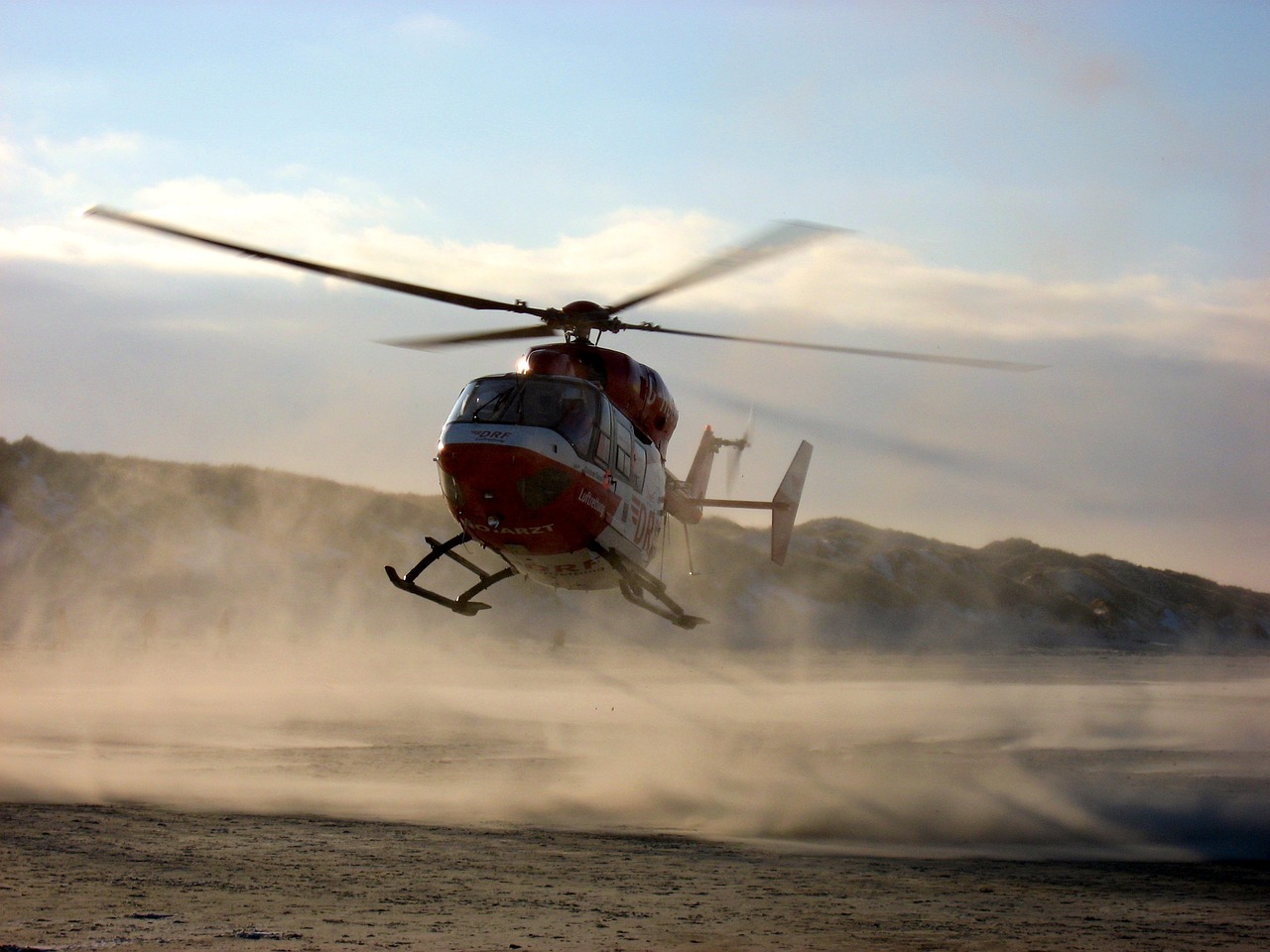
Advantages Over Traditional Logistics
The K-MAX unmanned helicopter is not just another gadget in the tech world; it’s a game-changer that brings a myriad of advantages over traditional logistics methods. Imagine trying to deliver supplies to a remote location where roads are non-existent or heavily damaged—this is where K-MAX swoops in like a superhero. With its ability to transport cargo without the need for a pilot, it dramatically reduces the operational costs associated with manned flights.
One of the standout features of the K-MAX is its capacity to access hard-to-reach areas. Traditional logistics often relies on ground transportation, which can be hindered by weather, terrain, or infrastructure damage. The K-MAX, on the other hand, can fly over these obstacles, delivering essential supplies directly to the point of need. This capability is especially crucial in disaster relief scenarios where every second counts.
Moreover, safety is another area where K-MAX shines. By eliminating the need for a pilot in high-risk environments, it reduces the potential for human error and keeps personnel out of harm's way. In situations like military operations or hazardous material transport, this advantage cannot be overstated. The K-MAX can handle missions that would be too dangerous for traditional aircraft, making it a reliable option for sensitive tasks.
In terms of efficiency, the K-MAX is designed for quick turnarounds. It can be loaded and dispatched rapidly, which is a stark contrast to the lengthy processes often involved with conventional logistics. This speed translates to increased operational efficiency, allowing businesses and military operations to respond to needs in real-time. For instance, in military logistics, the ability to deliver supplies swiftly can mean the difference between success and failure in critical missions.
Let’s take a closer look at some specific advantages:
| Advantage | Description |
|---|---|
| Cost-Effectiveness | Lower operational costs due to reduced manpower and faster delivery times. |
| Accessibility | Ability to deliver to remote or inaccessible locations without the need for ground infrastructure. |
| Safety | Minimizes risk to human life by removing pilots from dangerous missions. |
| Efficiency | Quick loading and dispatch capabilities enhance response times. |
In summary, the K-MAX unmanned helicopter is not just making logistics easier; it’s redefining what’s possible. As we move forward, the integration of such advanced technologies will continue to reshape industries, making them more resilient and capable of meeting the challenges of tomorrow. The traditional logistics model is being tested, and with the K-MAX leading the charge, it’s clear that the future favors the innovative.
- What is the K-MAX helicopter primarily used for?
The K-MAX is primarily used for cargo transport in various sectors, including military, commercial, and disaster relief operations.
- How does K-MAX improve safety in logistics?
By operating without a pilot, K-MAX minimizes the risks associated with human error and keeps personnel safe in hazardous environments.
- Can K-MAX operate in bad weather?
Yes, the K-MAX is designed to handle various weather conditions, making it more reliable than traditional ground transport in adverse situations.
- What are the cost benefits of using K-MAX?
Using K-MAX can significantly lower operational costs due to reduced manpower needs and faster delivery times.

Challenges and Limitations
The K-MAX unmanned helicopter, while a game-changer in logistics, is not without its . As with any innovative technology, there are hurdles that need to be overcome for widespread adoption. One of the primary issues is the regulatory landscape. In many regions, the regulations governing unmanned aerial vehicles (UAVs) are still evolving. This often leads to delays in deployment as companies navigate complex legal frameworks. For instance, obtaining the necessary airspace permissions can be a lengthy process that hinders operational efficiency.
Moreover, the technological limitations of the K-MAX can pose challenges. Although it is equipped with advanced navigation and cargo handling systems, there are still concerns regarding its ability to operate in adverse weather conditions. Heavy rain, strong winds, or fog can significantly impact its performance and safety. This limitation can restrict its use in certain environments, particularly in regions prone to unpredictable weather patterns.
Another critical factor is public perception. Many people are still wary of unmanned systems, associating them with military operations or privacy concerns. This skepticism can lead to resistance from communities when it comes to deploying K-MAX in civilian settings. Education and outreach are essential to help the public understand the benefits of such technology, but this requires time and resources.
| Challenge | Description |
|---|---|
| Regulatory Issues | Complex legal frameworks can delay deployment. |
| Technological Limitations | Performance affected by adverse weather conditions. |
| Public Perception | Skepticism about unmanned systems can hinder acceptance. |
Lastly, there’s the matter of cost and investment. While K-MAX can reduce operational costs in the long run, the initial investment for acquiring and integrating such technology can be substantial. Companies need to weigh these upfront costs against the potential savings and benefits, which can sometimes lead to hesitation in adopting this innovative solution.
In summary, while the K-MAX unmanned helicopter shows immense potential in revolutionizing logistics, it faces several challenges that need to be addressed. Overcoming regulatory hurdles, enhancing technology, improving public perception, and justifying costs are critical steps for the K-MAX to achieve its full potential in the logistics landscape.
- What are the primary challenges facing K-MAX? The main challenges include regulatory issues, technological limitations, public perception, and high initial costs.
- How does weather affect the K-MAX's operations? Adverse weather conditions, such as heavy rain or strong winds, can significantly impact the K-MAX's performance and safety.
- Why is public perception a challenge for K-MAX? Many people associate unmanned systems with military operations or privacy concerns, leading to skepticism about their use in civilian settings.
- What is the potential for K-MAX in the future? With advancements in technology and regulatory frameworks, K-MAX has the potential to become a vital part of logistics in various industries.

Future of Aerial Logistics
The future of aerial logistics is not just a distant dream; it's unfolding right before our eyes, and the K-MAX unmanned helicopter is at the forefront of this revolution. Imagine a world where goods can be delivered to the most remote locations without the constraints of traditional transportation methods. The K-MAX is paving the way for this transformation, utilizing cutting-edge technology to redefine how we think about logistics.
As we look ahead, several key trends are likely to shape the future of aerial logistics:
- Increased Automation: The integration of artificial intelligence (AI) and machine learning will enhance the capabilities of unmanned aerial vehicles (UAVs) like the K-MAX. This will allow for more autonomous operations, reducing the need for human intervention and increasing efficiency.
- Expanded Delivery Networks: With advancements in drone technology, we can expect to see a broader network of delivery routes, reaching areas that were previously inaccessible. This will not only improve logistics but also support humanitarian efforts in disaster-stricken regions.
- Regulatory Evolution: As the technology matures, so too will the regulations governing aerial logistics. Governments are beginning to recognize the potential benefits of UAVs and are likely to create frameworks that facilitate their safe and effective use.
Moreover, the K-MAX is set to play a crucial role in industries that require rapid response times. For instance, in emergency situations such as natural disasters, the ability to deliver supplies quickly can save lives. The K-MAX's vertical lift capability allows it to transport heavy loads to areas where ground transport may be hindered by debris or damaged infrastructure.
Another exciting prospect is the potential for collaborative logistics. Imagine multiple K-MAX helicopters working in tandem, coordinating their flights to optimize delivery schedules and routes. This level of collaboration could significantly reduce delivery times and costs, making aerial logistics a viable option for a wider range of industries.
In addition to efficiency and speed, the environmental impact of aerial logistics is an important consideration. As companies and consumers become more environmentally conscious, the demand for sustainable delivery options is likely to increase. The K-MAX, with its ability to make precise deliveries and reduce the carbon footprint associated with traditional transport methods, stands to benefit from this shift in consumer behavior.
However, the future of aerial logistics is not without its challenges. Issues such as public perception, privacy concerns, and air traffic management will need to be addressed. As UAVs become more prevalent, educating the public about their benefits and safety measures will be crucial in gaining acceptance.
In conclusion, the K-MAX unmanned helicopter is not just a technological marvel; it represents a significant leap forward in the logistics industry. As we continue to explore the capabilities of aerial delivery systems, the K-MAX is poised to lead the charge, transforming how we think about logistics and delivery in the years to come.
- What is the K-MAX unmanned helicopter? The K-MAX is a unique unmanned helicopter designed for cargo transport, capable of delivering heavy loads to remote locations.
- How does the K-MAX improve logistics? It enhances logistics by providing rapid delivery capabilities, reducing operational costs, and accessing hard-to-reach areas.
- What industries can benefit from K-MAX? Industries such as military, agriculture, construction, and disaster relief can significantly benefit from the K-MAX's capabilities.
- Are there any challenges facing K-MAX? Yes, challenges include regulatory hurdles, public perception issues, and the need for advanced air traffic management systems.
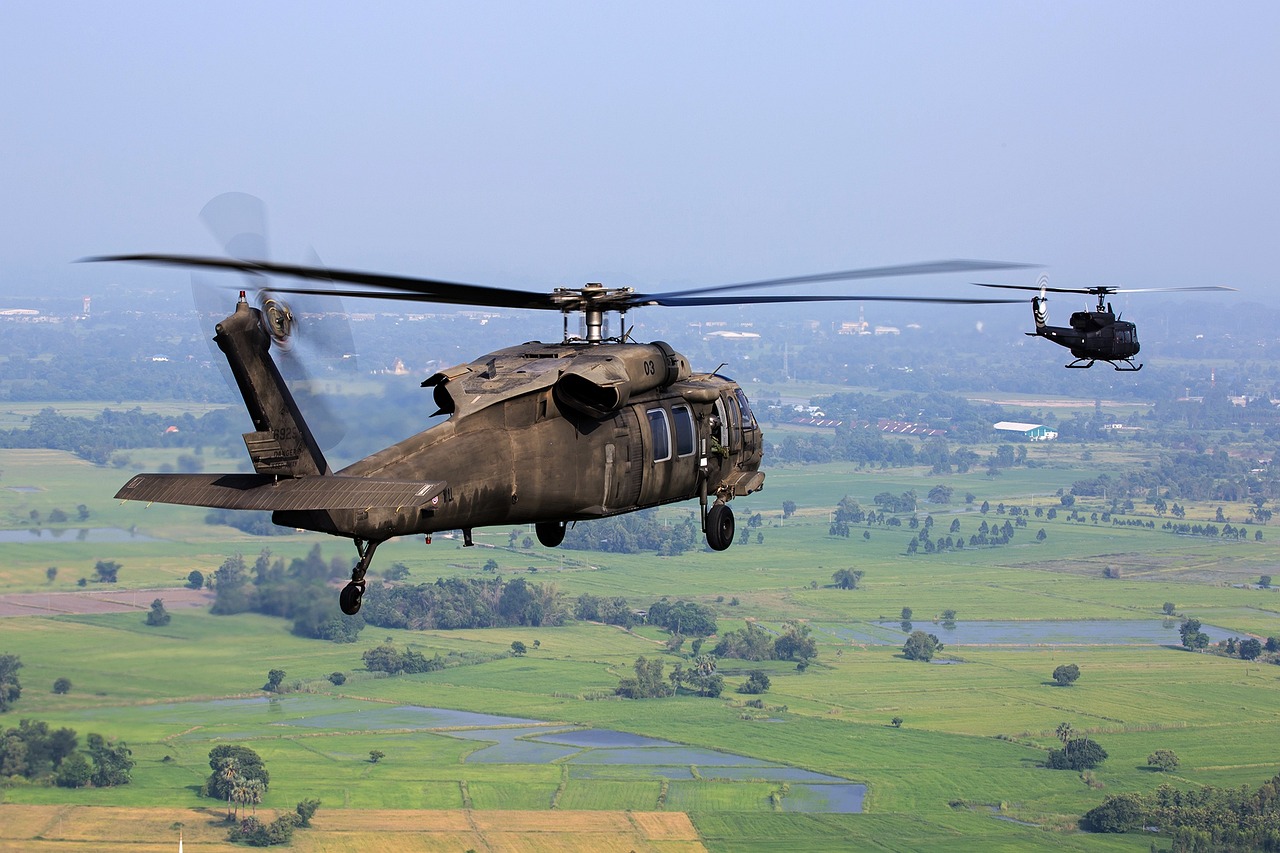
Case Studies of Successful Deployments
The K-MAX unmanned helicopter has proven its mettle in various real-world scenarios, showcasing its versatility and efficiency in logistics operations. One of the most notable case studies involves its deployment in military operations in Afghanistan. Here, the K-MAX was utilized for rapid resupply missions, delivering crucial supplies such as ammunition, food, and medical equipment directly to troops in remote locations. This capability not only reduced the time it took to resupply forces but also minimized the risk to human life by eliminating the need for manned transport missions in hostile territories.
Another compelling example is its use in disaster relief efforts. After the devastating earthquake in Haiti, the K-MAX was deployed to deliver essential supplies to areas that were otherwise inaccessible due to damaged infrastructure. The helicopter's ability to hover and drop supplies in tight spots allowed aid organizations to reach those in desperate need quickly. This deployment highlighted the K-MAX's potential to save lives and expedite relief efforts during emergencies.
In the commercial sector, the K-MAX has made significant strides in the construction industry. For instance, during a large-scale construction project in a remote area, the K-MAX was used to transport heavy materials like steel beams and concrete blocks. By utilizing the K-MAX, the construction team was able to reduce transportation costs significantly and avoid delays caused by traditional logistics methods. This case exemplifies how the K-MAX can enhance productivity and efficiency in commercial operations.
To further illustrate the impact of K-MAX deployments, the following table summarizes key statistics from these case studies:
| Case Study | Location | Year | Key Outcomes |
|---|---|---|---|
| Military Resupply | Afghanistan | 2011 | Reduced resupply time; Enhanced troop safety |
| Disaster Relief | Haiti | 2010 | Rapid delivery of aid; Access to remote areas |
| Construction Transport | Remote Construction Site | 2022 | Cost savings; Increased project efficiency |
These case studies not only emphasize the K-MAX's capabilities but also its potential to reshape logistics in various industries. As more organizations recognize the advantages of unmanned aerial systems, the K-MAX is likely to see increased adoption across sectors, paving the way for innovative solutions to logistical challenges.
- What is the K-MAX unmanned helicopter?
The K-MAX is a versatile unmanned helicopter designed for cargo transport, capable of carrying heavy loads to remote or hard-to-reach areas. - How does K-MAX enhance military logistics?
K-MAX provides rapid resupply capabilities, reducing the risk to personnel and ensuring that troops receive essential supplies quickly. - Can K-MAX be used in commercial applications?
Yes, K-MAX has been successfully used in construction, agriculture, and disaster relief, demonstrating its versatility in various sectors. - What are the main advantages of using K-MAX over traditional logistics methods?
K-MAX offers reduced operational costs, increased safety, and the ability to access remote locations that may be difficult for traditional vehicles.
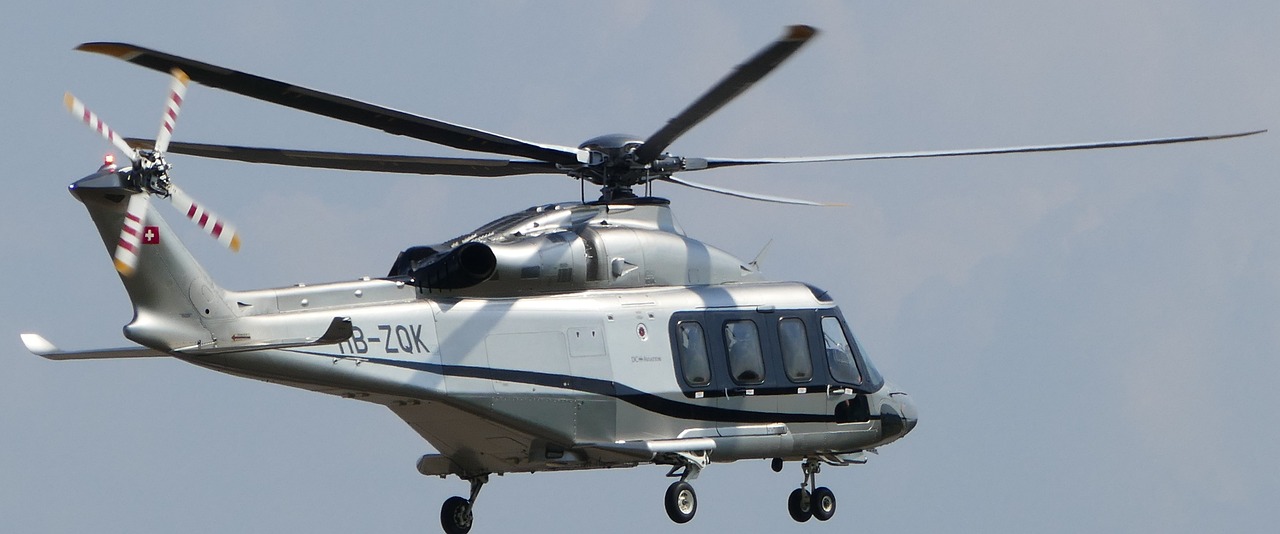
Comparative Analysis with Other UAVs
The K-MAX unmanned helicopter stands out in the crowded field of unmanned aerial vehicles (UAVs), but how does it truly compare with its competitors? To answer this, we need to delve into its specifications, capabilities, and intended applications. While many UAVs focus on surveillance or reconnaissance, the K-MAX is uniquely designed for heavy-lift cargo transport. This specialization gives it a distinct edge, particularly in logistical operations where payload capacity and reliability are paramount.
When we compare the K-MAX to other UAVs, such as the DJI Matrice series or the Boeing Insitu ScanEagle, several factors come into play:
| Feature | K-MAX | DJI Matrice 600 | Boeing ScanEagle |
|---|---|---|---|
| Payload Capacity | 2,700 lbs | 6.6 lbs | 40 lbs |
| Flight Time | Over 6 hours | Up to 35 minutes | Up to 24 hours |
| Operating Range | Up to 100 miles | Up to 3 miles | Up to 100 miles |
| Primary Use | Cargo Transport | Filming/Photography | Surveillance/Reconnaissance |
This table highlights significant differences in payload capacity, flight time, and intended use. The K-MAX's ability to carry a load of up to 2,700 lbs is a game-changer, especially in military and humanitarian logistics, where transporting supplies quickly can mean the difference between success and failure. In contrast, the DJI Matrice series, while excellent for aerial photography and light payloads, simply cannot compete when it comes to heavy-lift capabilities.
Another critical point of comparison is flight endurance. The K-MAX can operate for over 6 hours, making it highly effective for long-distance delivery missions. The DJI Matrice, with a maximum flight time of just 35 minutes, is limited in its operational range, which can be a significant drawback for logistics operations that require extended flight durations.
Moreover, the K-MAX's operational range of up to 100 miles places it on par with the Boeing ScanEagle, which is also designed for long-range missions. However, while the ScanEagle excels in surveillance, it lacks the K-MAX's heavy-lift capabilities. This specialization in cargo transport is what makes the K-MAX particularly appealing for industries that require reliable and efficient logistics solutions.
In summary, while other UAVs serve their purposes well, the K-MAX's unique features and capabilities make it an invaluable asset in the logistics sector. Its heavy-lift capacity, long flight times, and operational range allow it to tackle challenges that many other UAVs simply cannot handle. As logistics demands continue to evolve, the K-MAX is poised to maintain its competitive edge in the aerial delivery landscape.
- What is the maximum payload capacity of the K-MAX? The K-MAX can carry up to 2,700 lbs of cargo.
- How long can the K-MAX fly without needing to refuel? The K-MAX has a flight endurance of over 6 hours.
- What industries benefit the most from using the K-MAX? The K-MAX is particularly beneficial in military logistics, construction, agriculture, and disaster relief operations.
- How does the K-MAX compare to traditional delivery methods? The K-MAX offers reduced operational costs, increased safety, and the ability to access hard-to-reach areas compared to traditional logistics methods.

Conclusion: The Future of K-MAX in Logistics
The K-MAX unmanned helicopter is not just another technological innovation; it represents a paradigm shift in the logistics industry. As we look towards the future, it’s clear that the K-MAX is poised to play a pivotal role in reshaping how goods are transported across various sectors. With its unique ability to carry heavy payloads to remote locations, the K-MAX stands out as a beacon of efficiency and reliability. Imagine a world where delivery delays are a thing of the past, where critical supplies can be dispatched to disaster zones at a moment's notice, or where agricultural products can be transported directly from farms to markets without the hassles of traditional logistics. This vision is becoming increasingly feasible with the advancements in K-MAX technology.
One of the most significant advantages of the K-MAX is its versatility. It’s not limited to military applications; its potential in commercial logistics is vast. Industries such as construction, agriculture, and emergency services are already beginning to recognize the benefits of integrating K-MAX into their operations. For instance, in construction, the ability to transport materials directly to hard-to-reach sites can drastically reduce project timelines and costs. In agriculture, K-MAX can aid in the distribution of seeds and fertilizers across expansive fields quickly and efficiently. The possibilities are endless!
However, while the future looks bright for K-MAX, it is essential to acknowledge the challenges that lie ahead. Regulatory hurdles, technological limitations, and public perception issues must be addressed to fully realize the potential of unmanned aerial systems in logistics. As we move forward, collaboration between industry stakeholders, regulators, and the public will be crucial in paving the way for widespread adoption.
In summary, the K-MAX unmanned helicopter is set to revolutionize logistics by enhancing efficiency, reducing costs, and providing solutions to logistical challenges that have long plagued various industries. As we embrace this new era of aerial delivery systems, we can expect to see a significant transformation in how goods are transported, making logistics faster, safer, and more accessible than ever before.
- What is the K-MAX unmanned helicopter?
The K-MAX is an unmanned aerial vehicle designed for cargo transport, capable of lifting heavy loads to remote locations. - How does K-MAX improve logistics efficiency?
By providing rapid delivery capabilities, especially in hard-to-reach areas, K-MAX reduces the time and costs associated with traditional logistics methods. - What industries can benefit from K-MAX?
Industries such as military, construction, agriculture, and disaster relief are already leveraging K-MAX technology for various applications. - What challenges does K-MAX face?
Challenges include regulatory approvals, technological limitations, and the need for public acceptance of unmanned aerial systems. - What does the future hold for K-MAX?
The future looks promising, with potential advancements in technology and increasing adoption across multiple sectors.
Frequently Asked Questions
- What is the K-MAX unmanned helicopter?
The K-MAX is an advanced unmanned helicopter designed for efficient cargo transport. It stands out due to its unique capabilities, allowing it to carry heavy loads and operate in challenging environments, making it a game-changer in logistics.
- How does K-MAX improve military logistics?
K-MAX enhances military logistics by providing rapid resupply capabilities, especially in remote or hostile areas. Its ability to operate without a pilot allows for safer and more efficient deliveries, reducing risks to personnel while ensuring that troops receive the supplies they need promptly.
- What are the commercial applications of K-MAX?
The K-MAX is making a significant impact in various commercial sectors, including construction, agriculture, and disaster relief. Its ability to deliver supplies to hard-to-reach locations makes it an invaluable tool for industries that require efficient logistics solutions.
- What advantages does K-MAX have over traditional logistics methods?
Some of the key advantages of K-MAX include reduced operational costs, increased safety, and the ability to access remote areas that traditional vehicles cannot reach. This flexibility makes it a preferred choice for many logistics operations.
- What challenges does K-MAX face?
Despite its numerous benefits, K-MAX encounters challenges such as regulatory hurdles, technological limitations, and public perception issues. Addressing these challenges is crucial for wider acceptance and deployment of the technology.
- What does the future hold for aerial logistics with K-MAX?
The future of aerial logistics is bright with the integration of unmanned systems like K-MAX. As technology advances, we can expect more innovative applications and improvements that will further revolutionize how logistics are managed across various sectors.
- Are there any successful case studies involving K-MAX?
Yes, there are several case studies highlighting the successful deployment of K-MAX in various missions. These real-world applications demonstrate its effectiveness and the positive impact it has had on logistics operations in different industries.
- How does K-MAX compare to other UAVs?
K-MAX has unique strengths that set it apart from other unmanned aerial vehicles. Its specifications and capabilities make it particularly suited for logistics, and comparative analyses show how it excels in areas where competitors may fall short.





